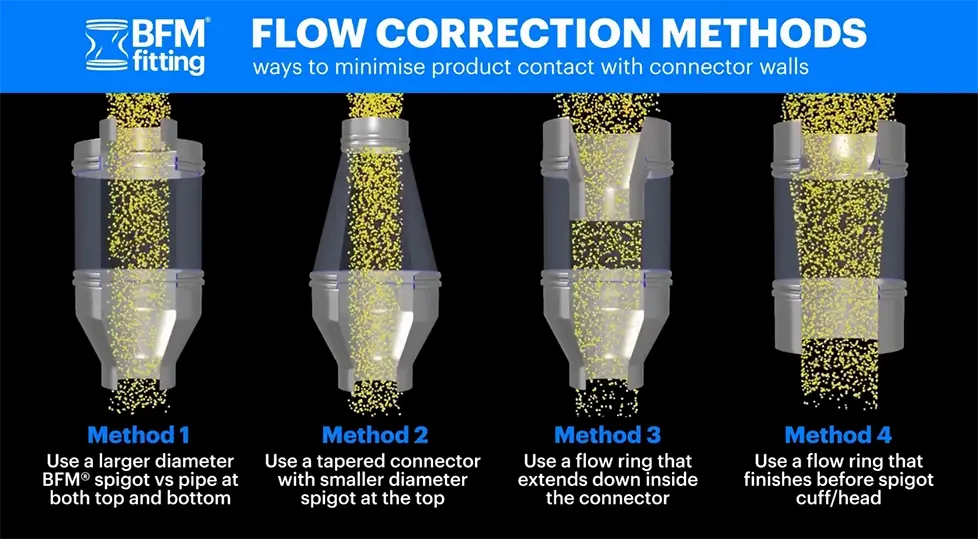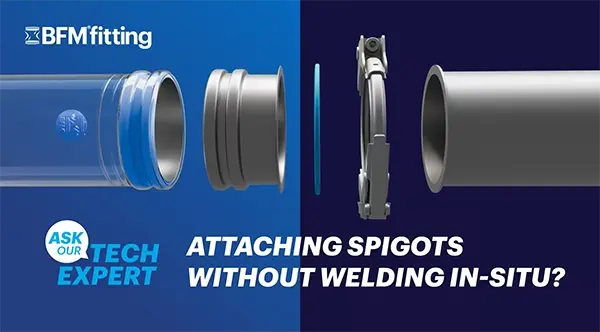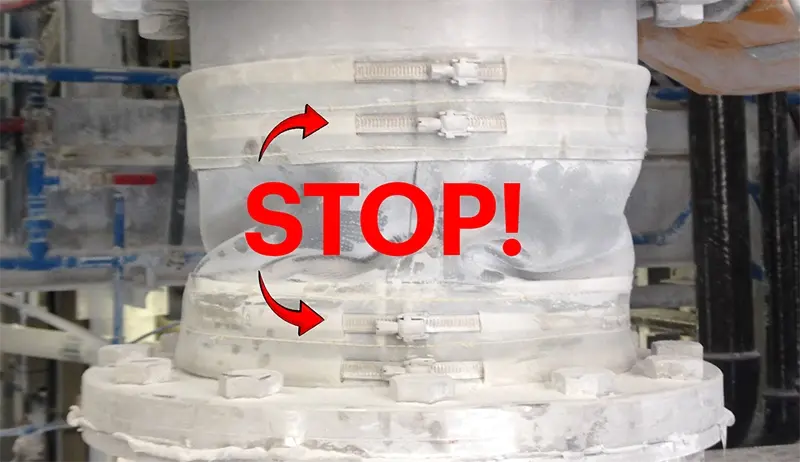In an ideal world, we would eliminate all hazards in the workplace to keep our staff safe, but the reality is that there are practical considerations - and human error - that mean we'll always live with some degree of risk.
Employers today are legally required to identify all potential hazards and put in place controls to reduce safety risks for their staff. This obligation can have a big impact on industries such as manufacturing where there are many potential physical dangers in the workplace.
Why Bulk Powder Processing is High Risk
 Bulk powder processing involves handling large quantities of powders like chemicals, food ingredients, and pharmaceuticals, presenting risks to factory staff in many ways, including:
Bulk powder processing involves handling large quantities of powders like chemicals, food ingredients, and pharmaceuticals, presenting risks to factory staff in many ways, including:
- Dust inhalation: Powders generate dust, which can cause respiratory problems if inhaled. Exposure to some powders can lead to serious respiratory diseases like silicosis, asthma, and lung cancer.
- Fire and explosion hazards: Flammable powders can ignite or explode when exposed to sparks caused by machinery or static electricity, resulting in serious injuries or even fatalities.
- Physical injury: Workers risk physical injury from trips and falls, getting hands caught in moving machinery parts, and accidents during daily maintenance activities like changing flexible connectors using screwdrivers.
While providing personal protective equipment (PPE) and training on safe powder handling practices are crucial steps in mitigating these risks, investing in high-quality process equipment with advanced safety features will provide far-reaching risk reductions for staff.
How are Flexible Connections Potential Danger Points?
In bulk powder processing, flexible connectors at transition points between equipment pieces can often attract dust and potential hand injuries.
It is important to have flexible connectors that effectively contain powder and do not leak, even when moving. They need to be easy to fit without risk to operators’ hands when installing or removing them.
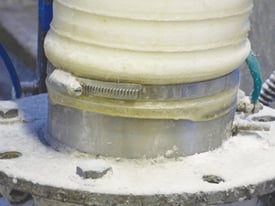 Old-Style Hose Clamps Can Be Particularly High Risk
Old-Style Hose Clamps Can Be Particularly High Risk
Hose clamps, a common fastening method, usually involve the use of screwdrivers in potentially dangerous positions, and injuries to hands and fingers when they slip can be nasty. Hose clamps are also notorious for leaking and not being dust-tight, especially when operating under pressure or with movement, like on sifters.
Flexible connectors give access to the product flow inside the production line, which is also a significant risk if you have machinery like rotary valves or rotating knives operating nearby.
Workers' hands can be put in danger when removing connectors close to these types of equipment, and precautions must be taken to follow proper protocols.
What can you do to improve Worker Safety?
- Use a worker-safe alternative to hose clamps
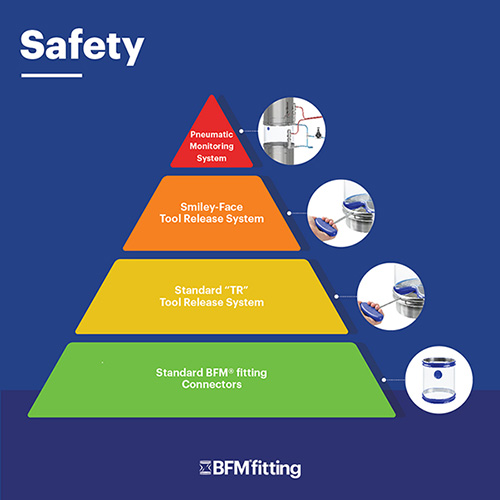 The BFM® fitting snap-fit connector system is now setting the standard for cleaner, safer powder processing.
The BFM® fitting snap-fit connector system is now setting the standard for cleaner, safer powder processing.
BFM® fitting’s Seeflex connectors and spigots (adaptors) are designed to create a 100% sealed transition so no dust can escape into the factory environment, keeping the air and surfaces cleaner and significantly reducing the risk of secondary explosions. The Seeflex materials also have static-dissipative properties to help eliminate the build-up of electrostatic charges in these high-risk areas.
If there was an explosion inside the process equipment for any reason, BFM®‘s strong and durable fittings are pressure resistant and designed to contain the explosion so that it can be vented out through the proper explosion relief systems.
What about the risk to the operator's hands when it comes to changing connectors? Unlike old-style hose- clamps, the easy snap-fit of the standard BFM® fitting connector range means that there is no need for difficult-to-access screws in awkward positions.
2. Control staff access to more dangerous transitions
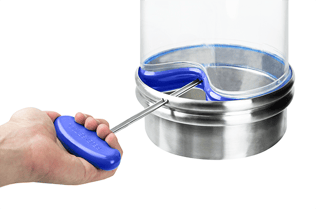 If you have rotary knives or valves that are close to flexible connector access points, the TR (Tool Release) options for the BFM® fitting system should be used.
If you have rotary knives or valves that are close to flexible connector access points, the TR (Tool Release) options for the BFM® fitting system should be used.
The BFM® TR connectors have a much firmer snap band, making them virtually impossible to remove by hand. A specially shaped tool is inserted through a hole in the top of the spigot to release the connector from the spigot. Only a designated holder of the special TR tool can remove the connector as a safety control.
The standard TR system is a round-shaped tool and a simple hole is drilled in the spigot.
If you have concerns that staff may attempt methods of improvising a tool themselves and poking through the TR hole, our ‘Smiley Face’ TR Tool option is the next safety option.
The spigot wall has a uniquely shaped hole punched into the top ridge, which will only fit the specific crescent-shaped Smiley Face tool - an added level of security control.
3. Use systems to let you know when your connectors are removed
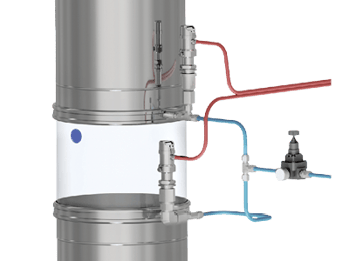 For the ultimate peace of mind, you can monitor when a BFM® fitting is removed in potentially dangerous areas with the Pneumatic Monitoring System.
For the ultimate peace of mind, you can monitor when a BFM® fitting is removed in potentially dangerous areas with the Pneumatic Monitoring System.
This system works by pumping pressurised air between the cuff of the BFM® connector and the spigot. Air-line sensors immediately detect if this outward pressure is released as the connector cuff gets pushed inwards anywhere around the connector when it is being removed, setting off an alarm and/or shutting off any moving parts below.
The system has a tamper-proof gauge and can also be used as a positional sensor to ensure all connectors in a large plant are always installed correctly. Two options are available depending on your operating environment/compliance requirements – an IP65 rated or an ATEX Category 3 rated.
4. Use quality flexible connectors that meet your operating requirements
Ensure you select quality flexible connectors such as our BFM fitting Connectors that provide a tight seal reducing the risk of dust leakage resulting in dust inhalation. A tight dust tight seal also helps to reduce your ATEX zones and potential explosion risk.
